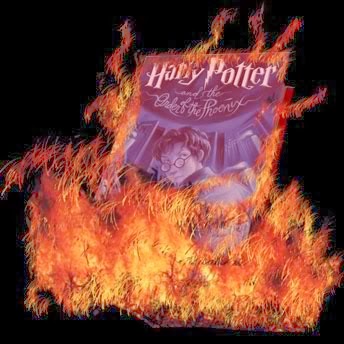

WATCH
Participatory culture has its values and threats, for both fan communities and media corporations. From a bottom-up perspective, the many possibilities fans have to engage with popular culture give rise to their creativity and collective social power, yet expose them to potential battles with big media conglomerates. From a top-down perspective, consumer participation is valuable as it can be translated into emotional capital, yet as media corporations cannot control the terms of participation, it can also have implications for their commercial interests. Indeed the terms and politics or participation in popular culture are often the subject of public debate. Just look at the Harry Potter Wars.
The Harry Potter (1997-2007) book series consists of a set of seven popular fantasy novels, which are said to have invigorated a new generation of readers and writers. The creators of the series, British author J. K. Rowling and her publisher Scholastic, have expressed their support of fan writers, stressing the importance of empowering children to expand their imagination and find their creative voice. However, since entertainment company Warner Bros. released the first feature film in the series, Harry Potter and the Philosopher’s Stone (2001), it was clear that they see consumer participation quite differently; fan fiction in their view is an infringement of intellectual property.

Inevitably, with the popularity of the series, websites centered on grassroots creativity inspired by the world of Harry Potter surfaces all over the web. From The Daily Prophet, an online fictional school newspaper, to The Sugar Quill, a main hub for fan fiction, these affinity spaces were set up, managed and primarily habited by children and youth, interested in practicing and improving their creative writing abilities in a more fun setting than the traditional classroom. Yet fans’ creative contributions were not appreciated by Warner Bros. who threatened them with legal action, even sending some fans cease-and-desist letters. In turn fans capitalized on the collective power of their online communities to organized against Warner Bros. eventually forcing the company to publically acknowledge that the way they handled the situation was a mistake. In this particular grassroots struggle, seeing the positive effects of world making, kids fought for their right for literacy and learning. In another struggle conservative critics, who saw the fictional world of Harry Potter as a negative force in children’s lives, fought educational institutions, publishers and civil liberty groups in an attempt to have the books banned from libraries and bookstores. Fearing their dwindling power to define cultural norms and monitor the type of culture that enters their homes and communities, conservative corporations, educational authorities and church leaders organized some 500 public struggles against the Harry Potter franchise in 2002. While conservative activists deemed the fictional world dangerous as it encourages kids to “invest more time mastering the details of a fictional environment and less time confronting the real world”, many teachers, parents and children fought back in defense of the books and their educational advantages.

Such debates constantly arise in the age of media convergence, as the range of different media and communication channels are expanding, traditional gatekeepers lose their ability to control cultural content, and other groups try to pull towards their own construction of culture. In chapter 6, we will expand on this process, by turning from popular culture to public culture, where convergence is applied in the political realm.
CHAPTERS
Chapter 5
DISCLAIMER
READ
Traditional gatekeepers’ attempt to maintain abilities to control cultural content, and other groups’ efforts to pull towards their own construction of culture.
While the conservatives’ struggle to ban the Harry Potter books frames children as passive victims and adults as having a moral responsibility to protect them; the fan community’s struggle to maintain their creative rights shows that children are in fact active participants in the media landscape.
What is the term used to describe the online spaces where informal learning takes place, i.e. the Harry Potter fan fiction communities?
What is the main difference between the two Harry Potter struggles over children’s culture?
What were the two forces driving the Harry Potter Wars?
What are the values and threats of participatory culture, from the viewpoint of media corporations?
Find out how children and teachers in the UK think Harry Potter influenced literacy.
Why Heather Can Write: Media Literacy and the Harry Potter Wars
Delve deeper into participatory culture, where children are often the focus of media related struggles.
GLOSSARY
Jenkins, H. (2008) Convergence Culture. Where Old and New Media Collide. U.S.A. New York: New York University Press.
Waterstone's Booksellers Ltd. (July 10, 2005). Waterstone's Booksellers Ltd: Harry Potter Improves Children’s Reading. Retrieved from http://www.prnewswire.co.uk/news-releases/waterstones-booksellers-ltd--harry-potter-improves-childrens-reading-154055255.html
Facts & Figures
Practice
Test your knowledge by answering these questions about Chapter 5
CREATIVE TEAM
Affinity spaces
What are the values and threats of participatory culture, from the viewpoint of fan communities?
THE AUTHOR & THE BOOK
Participation allows fans to practice their creative abilities, collective intelligence and social power, but it also puts them in danger of getting into authorship battles with corporations.
Consumer participation increases the value of a brand, potentially making it a lovemark, yet it poses a threat as fans’ appropriation of content can be seen as potentially damaging to business interests
LITERATURE